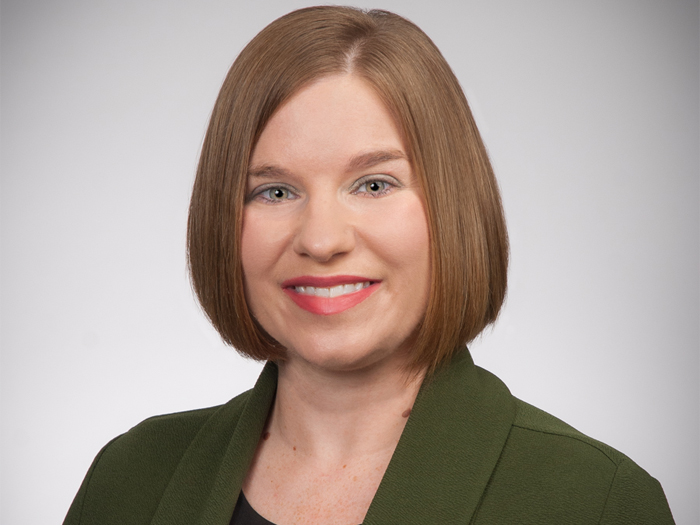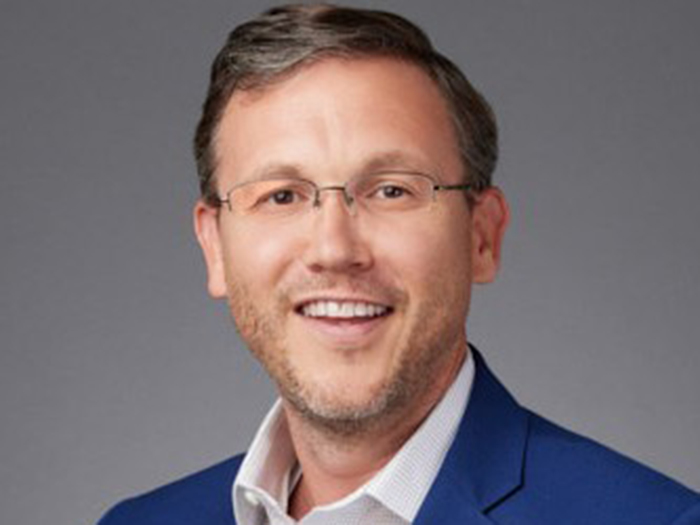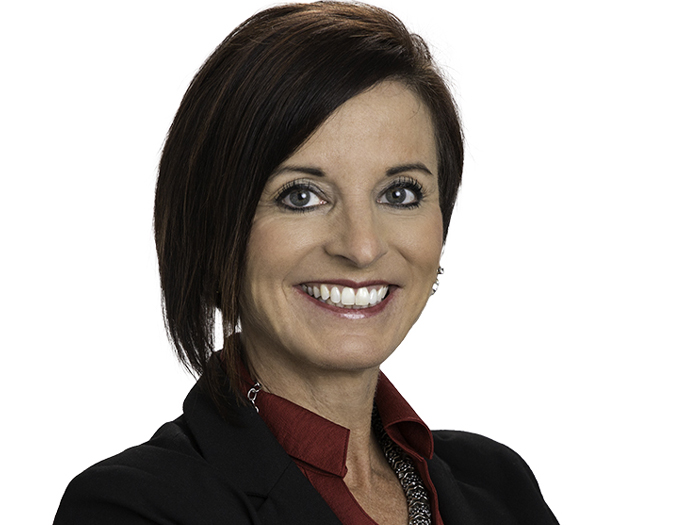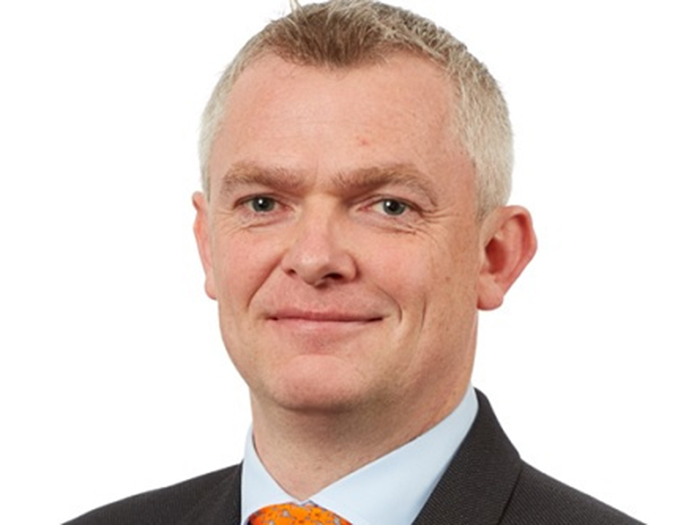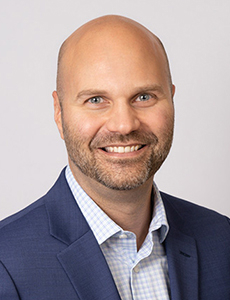Health Care Students Need Mental Health Resources to Face On-the-Job Pressures. Insurance Can Help

Sterile halls, fluorescent lights, antiseptic. Saving lives, finding answers, solving problems.
When a young medical student steps into clinicals for the first time, how do they view the hospital around them?
There’s likely a sense of awe mixed with nerves and excitement. At the best of times, being called into a profession designed to help people on their greatest and worst days, and then actually being on the job, can feel romantic.
But then there are the times when these health care students feel the strain of the job: the long shifts, the physical demands — not to mention the pressures of their academic life to get it right in order to save lives.
It can be a lot.
“I’ll never forget the last [adjunct work] I did. I had a fourth-year nursing student, and she just lost it on the middle of the floor at the hospital,” shared Gigi Acevedo-Parker, national practice leader — clinical risk management, HUB International.
“I mean, she just started crying. She just rolled up into a ball. It was a sad thing to see.”
Acevedo-Parker has more than 30 years’ experience in nursing, working as a health care provider, nursing leader, consultant and educator. Her background in psychiatric mental health nursing enabled her to address her student’s needs in the moment, but not all collegiate-level educators have those same tools readily available.
Higher education facilities, therefore, have a responsibility to their students to help address these needs, especially before they reach such extreme levels of burnout that they may one day endanger a patient.
“When burnout occurs in health care — and it occurs from the clinicians, the physicians, the nurses and all the other professionals, including the students that come into the health care environment — when they’re experiencing burnout and physical and mental exhaustion, they are potentially affecting the patients,” Acevedo-Parker said.
Risk & Insurance has been diving into student mental health through its Mental Health in Higher Education series.
We’ve explored how social life can impact students’ abilities to cope with mental illness, how being a part of often-ostracized communities can impede their academics and how study abroad can lead to unexpected stressors.
Today, we’re exploring how students in health care, and medical students in particular, face their own blend of stressors, and how higher ed facilities can partner with risk management and insurance to help students cope.
The Pressure of Having Someone Else’s Life in Your Hands
Burnout is real in the health care world, whether its caregivers are in school or already practicing.
“When you’re looking at the research, professionals taking care of other individuals are going to have a higher likelihood of burnout. We’ve seen an increase in the prevalence, definitely, since the pandemic,” said Dawn Moore, senior director of utilization management at Genex.
“The core of the nursing profession is taking care of people. Nurses often find themselves with a higher likelihood of burnout if some form of routine self-care is not practiced,” she continued.
“Constantly giving to others will eventually take a toll on anyone.”
For the bright-eyed student aiming to join the medical field, nursing or otherwise, that can be daunting. If the profession they are choosing comes with a stigma of burnout and stress, how do they know they will cope?
And that’s not to mention the pressures they’re likely to face before graduation.
According to research from Springer, health care students have been experiencing higher levels of anxiety and depression since the outbreak of COVID-19: “The rates of health care students who suffer from mental health symptoms are high: depression (74.6%), insomnia (62.6%) and anxiety (62.3%),” per the study.
Where is this added stress coming from?
For one thing, medical students, no matter the discipline they’re heading into, aren’t just joining a profession. They’re becoming professional and certified caregivers. As one med student blogged, “One day, someone will put their life in your hands and you’ll have to know what to do next.
“The pressure will bear down heavier than any book that you’ve read and any exam you’ve taken,” author Bianca Villanueva stressed.
Related Reading: With Fewer Medical Staff, Health Care Could Easily See Increased Professional Liability and Workers’ Comp Claims
That kind of knowledge — that one day, your decision could mean life or death for someone else — can weigh heavily on any person. Even the right decisions can lead to devastating outcomes.
“[I spent] my first few years in the clinical setting as a graduate nurse waiting for the results of my nursing boards working in the emergency room,” Moore shared.
“A patient was rolled into the ER, and we worked very hard to stabilize him, but the injury and blood loss was so significant that we unfortunately lost him, and he passed away. In nursing school there are chapters that discuss the loss of a patient, but honestly, those few chapters never prepare you for real life loss.
“I remembered crying and sitting heavy with emotion of losing this patient,” Moore said.
What Happens If It’s Not Addressed Before Graduation?
Burnout in medicine can have lasting effects for the profession and the people it serves. For students, a rigorous academic life is just the start. Now add on social stressors, and don’t forget the exam studying, clinicals, labs and more … it’s a lot to manage.
Acevedo-Parker emphasized that when these stressors are not addressed early, it can lead to multiple levels of poor outcomes.
“The first level is on academia, because now students are leaving, are not necessarily wanting to continue within their academic programs after they’re starting to experience burnout from the academic environment of health care,” Acevedo-Parker said.
“The second level of it is for clinicians and for students, because with extreme burnout comes the potential for a higher risk of medical errors,” she continued. This second level trickles down into the third level, where the patient has an increased potential for harm due to burnout.
Additionally, “if burnout is not addressed with medical students or other types of clinicians early on, it is documented that burnout has psychological factors including alcohol abuse, depression and suicidal ideation,” Acevedo-Parker said.
That last point has become a growing epidemic for the profession. The American College of Emergency Physicians reported that every year, roughly 300 to 400 physicians die by suicide in the U.S. Medical students have rates of depression 15 to 30% higher than the general population’s.
Further, “contributing to the higher suicide rate among physicians is their higher completion-to-attempt ratio, which may result from greater knowledge of lethality of drugs and easy access to means,” the college reports.
Universities and colleges want to look out for their students, no doubt. To prevent future devastation, luckily, action can be taken now through strong wellness programs and mental health resources.
What Universities and Colleges Can Do to Support Health Care Students
Risk management and insurance can provide higher ed partners with the right resources to help develop behavioral and mental health intervention teams, provide guidance toward policies and procedures related to identifying available resources, implement courses to help train faculty and staff, and more.
Acevedo-Parker shared one way she’s been actively working to address mental health with her clients.
“I recently developed a risk management tool for identifying mental health issues in the workplace or even academic setting,” she said. The idea is to run a risk assessment of the facility to review its ability to support the mental health needs of their faculty, students or other personnel in order to better address any deficiencies.
“This tool can be used in all environments,” she added. “The academic environment, the health care environment. It could be construction. It could be hospitality. What we’re looking at is how supervisors, leaders, coworkers, staff — and then the message, the policies, the procedures, the strategies — how all these factors support or do not support the mental health of its population.”
Tools like this enable participants, including higher ed partners, to dig deep into how to address the needs of their population.
One other area where Moore would like to see more focus is in training faculty to better prepare students for the realities and demands of the job.
“In nursing school, I recall spending 20 minutes the first time I started an IV on a patient, thinking I would be given the ‘same’ time to step-by-step start an IV in the clinical setting,” she explained. “Reality of it was, I had five minutes to do it to survive being an ER nurse.”
That transition between academia and the workforce should be reviewed while students are still in school. Universities should be looking for ways to equip faculty to help prepare students for the realities of the clinical floor.
“With time, my knowledge and skills became second nature, but I strongly believe that more real-life scenarios being played out in school would help ease the transition of students to practicing clinicians,” said Moore.
“Burnout in other industries — it may not be as clearly correlated, but in health care it is,” Acevedo-Parker said. “If it’s not addressed early, these mental health issues, especially of suicide and alcoholism, will lead to poor patient outcomes and fewer clinicians to help others.” &
Stay tuned throughout our Mental Health in Higher Education Series to read more about how mental health impacts different student demographics across a broad range of topics, like student athletics, social life, finances and more.






